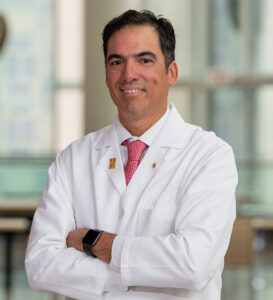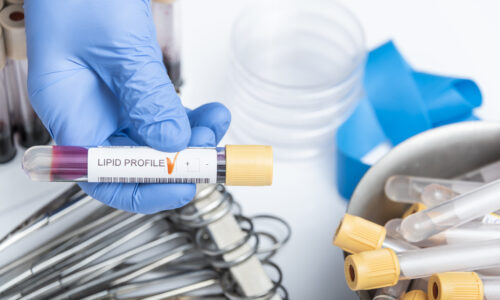Related Articles
May is American Stroke Month: Understand the Risks. Take Steps to Prevent a Stroke
May is American Stroke Month—a reminder that while stroke is one of the most serious health threats in the U.S., it is also one of the most preventable.
Each year, nearly 800,000 Americans experience a stroke. It can happen suddenly, without warning—but the conditions that lead to a stroke often build up over years. At The Texas Heart Institute (THI), our mission is to help people understand their risk and take action before a stroke happens.
What Is a Stroke?
A stroke occurs when blood flow to part of the brain is compromised or when a blood vessel in the brain bursts. When this happens, brain cells are deprived of oxygen and begin to die. The longer the brain is without oxygen, the more damage occurs. A stroke can cause paralysis, speech difficulties, memory problems, and even death.
There are two main types of stroke:
- Ischemic stroke (about 87% of all strokes): caused by a blood clot blocking an artery.
- Hemorrhagic stroke (about 13%): caused by a blood vessel bursting in the brain such as from an aneurysm.
What Causes Stroke?
The most common risk factors include:
- High blood pressure (the #1 cause)
- Smoking
- Diabetes
- High cholesterol
- Atrial fibrillation (irregular heartbeat)
- Obesity and physical inactivity
- Heavy alcohol use
These risk factors damage the arteries over time, increasing the chance of a blockage or rupture.
How You Can Prevent a Stroke
The best way to fight stroke is through prevention. Here are 10 steps you can take today for better health and reducing the chances of a stroke:
- Know your blood pressure and keep it in a healthy range.
- Ask your doctor about atrial fibrillation, a heart rhythm disorder that increases stroke risk.
- Quit smoking—it damages your blood vessels.
- Limit alcohol intake to no more than 1 drink a day for women and two drinks a day for men. Avoiding regular alcohol use is ideal.
- Manage cholesterol levels through diet, exercise, and medication if needed.
- Control diabetes by following your treatment plan.
- Exercise daily—even a brisk walk helps.
- Eat a low-sodium, low-fat diet rich in fruits and vegetables.
- Check for circulation issues with your doctor.
- Know the signs of stroke and call 911 immediately if you see them.
Recognize the Signs of Stroke: Think F.A.S.T.
-
- Face drooping
- Arm weakness
- Speech difficulty
- Time to call 911
Every second counts.
Dr. Eduardo Hernandez, President of The Texas Heart Institute Center for Cardiovascular Care, reminds us:
 “The signs of a stroke can come on suddenly—but it’s often the result of years of unseen damage. The message is clear: strokes are largely preventable. Consult regularly with your physician to ensure your blood pressure, cholesterol, and blood sugar are well controlled. Exercise regularly and consume a Mediterranean style diet. Importantly, know the warning signs of stroke and seek medical attention immediately if you experience them as prompt treatment can reduce disability and death from a stroke. Prevention is the most powerful treatment we have.”
“The signs of a stroke can come on suddenly—but it’s often the result of years of unseen damage. The message is clear: strokes are largely preventable. Consult regularly with your physician to ensure your blood pressure, cholesterol, and blood sugar are well controlled. Exercise regularly and consume a Mediterranean style diet. Importantly, know the warning signs of stroke and seek medical attention immediately if you experience them as prompt treatment can reduce disability and death from a stroke. Prevention is the most powerful treatment we have.”
During May, take a moment to think about your health and the health of your loved ones. Small lifestyle changes can protect your brain and improve your quality of life.
Visit www.texasheart.org for more information and tools to help you reduce your stroke risk.


